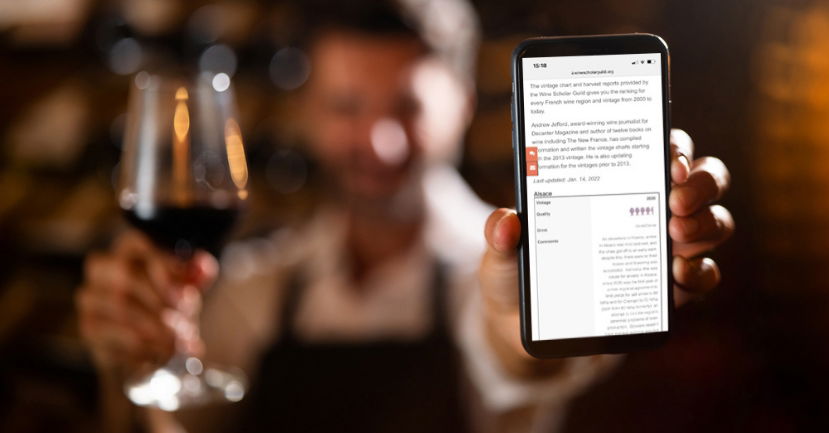BLOG
The 2020 Vintage in France, by Andrew Jefford
Andrew Jefford
Tasting and Trends

The vintage chart and harvest reports provided by the Wine Scholar Guild gives you the ranking for every French wine region and vintage from 2000 to today.
Andrew Jefford, award-winning author and columnist in every issue of Decanter and World of Fine Wine, Co-Chair Decanter World Wine Awards; Vice-Chair Decanter Asia Wine Awards, gives us his insight about the 2020 vintage in France.
The COVID pandemic made 2020 difficult in France as elsewhere in the world, but France’s winegowers had every reason to feel a sense of relief and gratitude as the year ended. Their future prosperity depends on both the quantity and the quality of each year’s harvest. Every French wine region was satisfied with quantities in 2020 and thrilled with quality. Sales may have been difficult in 2020 with the restaurant trade in abeyance and export markets disrupted, but after the run of good to great French vintages since 2015, no one had cause to complain about stocks.
It could all have been very different. Winter was extraordinarily mild (the warmest for over a century in Burgundy; the warmest ever recorded in the Loire Valley) and budburst in every region came at least two weeks ahead of the long-term averages, which posed a critical frost risk. In the end, though, only Provence (where the vines were active in the warmest spots as early as January) suffered frost losses. April was a month of record-breaking warmth, and May barely cooler, with copious rain. Flowering passed off well, so the main threats by midsummer were downy mildew and then powdery mildew. The dry heat of June’s end and a sweltering July solved those disease problems, though, and from then the only question was how badly a developing drought might affect quantities, and whether or not the bright sunshine would cause sunburn and raisining. Nothing is ever perfect in agriculture, and these were indeed gently problematic issues in free-draining vineyards or notably dry, sunny spots – yet overall the charge of water from the very wet winter, plus what was often an unusually wet May, helped the vines through.
Harvest was either early or very early (some domains on Burgundy’s Côte de Beaune completed their entire harvest in August for the first time ever), and most growers were excited about what they found in their vats. Astonishingly so, given that 2020 was the hottest year ever recorded in France, exceeding both 2003 and 2018. Why weren’t the vines uncomfortable? Why weren’t the wines unbalanced?
As in 2019, there were multiple causes. One of these was the pattern of heat: two of the months most wildly above normal were February and April, moments of the year when heat was never going to affect fruit quality. As mentioned above, groundwater reserves were good after a wet winter and May; there were few heat spikes, and nothing resembling the colossally long August heatwave of 2003; growers reported cool nights after hot summer days, which gave the vines some respite. It is possible that the vines themselves are beginning to adapt to new, warmer conditions; it is certain that winegrowers are adapting their practices in anticipation of dramatic summer heat.
What remains to be seen, though, is whether the abbreviated hang time of 2020’s rather short season, with much fruit August-harvested, will eventually become apparent in a lack of resonance in the wines. Perhaps the wines, too, don’t quite have the concentration, poise and pungency of the outstanding 2019 vintage. These things will emerge in the long-term; but freshness, fruit quality, generosity and impact will all bringing ample pleasure in the short term as drinkers begin to discover what 2020 has to offer.
Also view our French Wine Vintage Chart and detailed Vintage Reports for all French wine regions HERE. They have just been updated by Andrew Jefford and now include the 2020 vintage!



